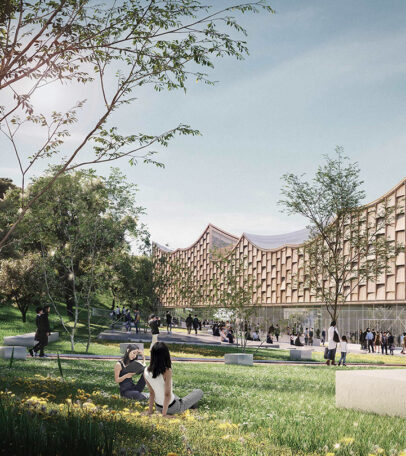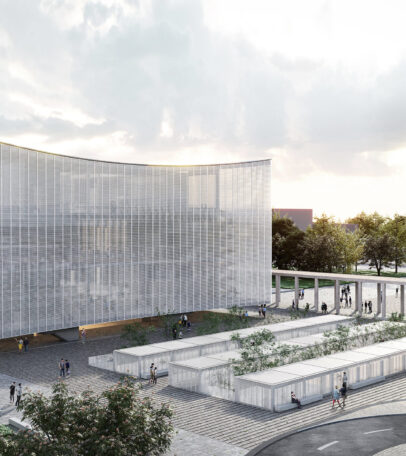Goyang City Hall
Institutional · Goyang, KR

The circular arrangement in architecture has always existed. The circle is a geometry that has accompanied us throughout history and in it resides the formal essence of the first social organizations. The circle assumes a natural democratic character in its geometry. The organic references of nature and biology and architectural references affirmed our willingness to establish our proposal with an homogenous perimeter that establishes an equitable implantation and relation to its surroundings whilst assuming a democratic geometry for the building to be organized as many of the first social organizations.
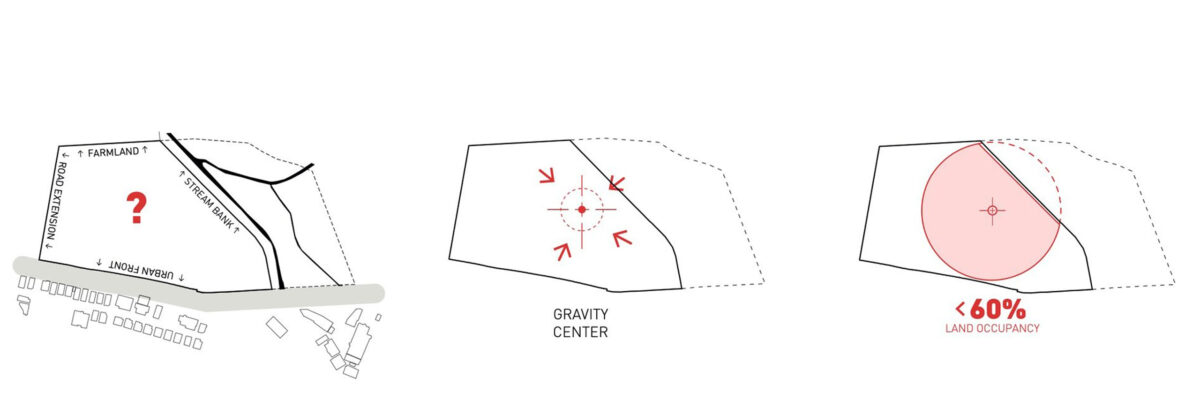
No Form
The shape of the lot is irregular. Moreover, the area is currently under development, generating uncertain border conditions. The project should not respond to unstable surrounding conditions.
Gravity Center
The first objective is to concentrate the program as a gravity center of the plot. Aim for the generation of an autonomous object able to create a powerful relationship with the surroundings.
A self-referential symbol
Second, is to generate a symbol that performs uniformly that contains all program. Circular isotropy as a strategy to adapt to the changing conditions of the limits of the plot.

The context conditions harbored a great morphological variety of natural and urban agents without a straightforward plot or order. Given the vast dispersion of formalities and reference elements, the building was born by understanding the specific geometry of the property, whose limit does not draw a recognized silhouette but a morphology molded by natural agents, among which the Daejangcheon stream stands out. This plot geometry is analyzed to identify the property center of gravity. This point defines the geometric center of the circle, being the primary expression of the project. Therefore, the building extends horizontally.
The proposal seeks a scheme that responds to this position’s sustainability, efficiency, and democratic accessibility parameters. It aims to eliminate the classic structures of government representation but rather a concatenation of spaces that follow a horizontal hierarchy between users and workers. A building that welcomes its visitors, establishing a maximum permeability that invites their enjoyment. A democratic infrastructure that attracts the citizens of Goyang, regardless of whether they need to visit the City Hall or Council. Goyang New City Hall becomes a popular destination and not just a government one.
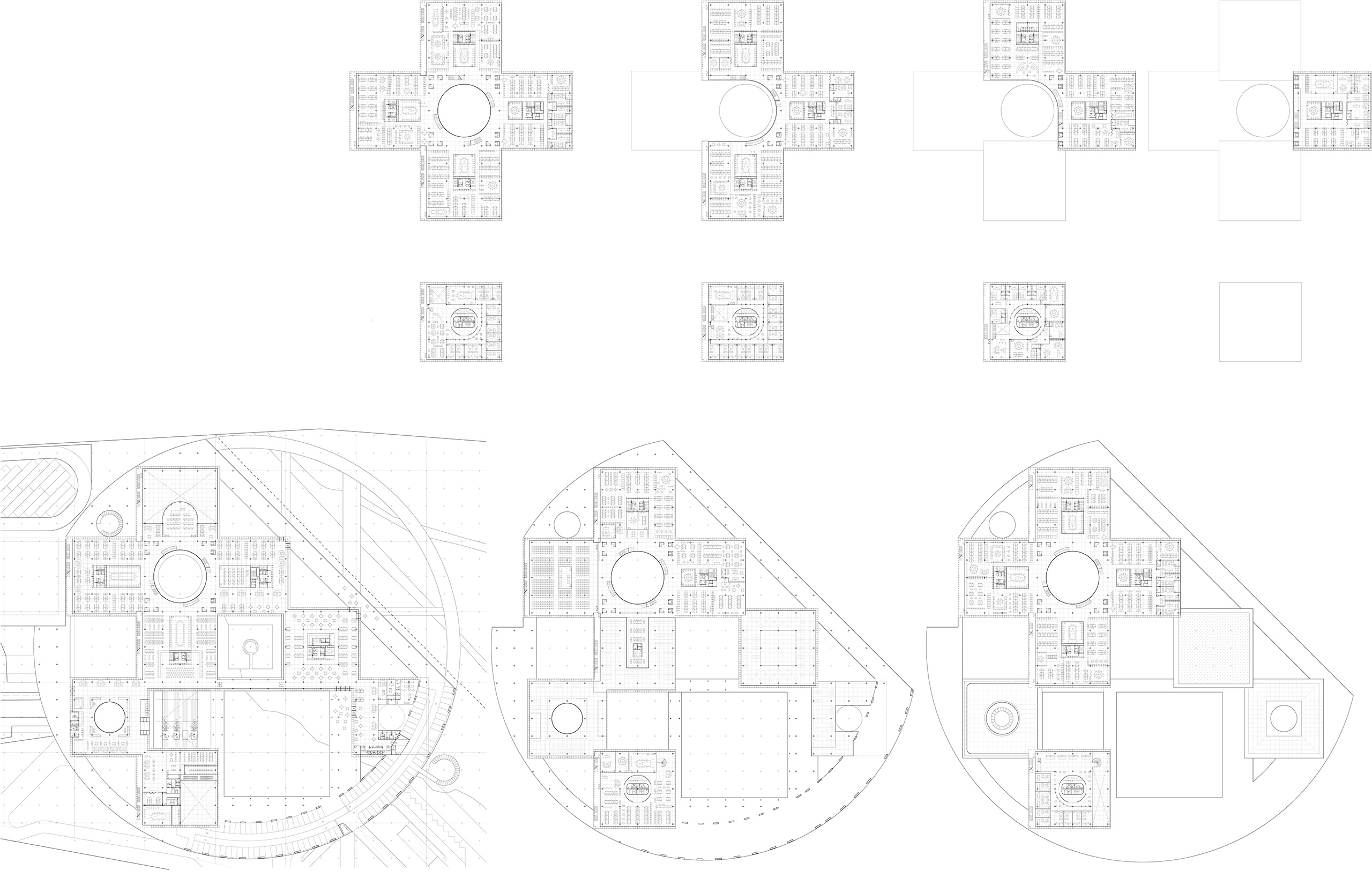

The project is elevated, obtaining great transparency and connectivity with the natural and urban environment of Goyang,
all of it organized through a sequence of open patios and closed public spaces. The ground floor, open to the city, shows
abundance in transparent surfaces, crucial in relation to democratic representation.
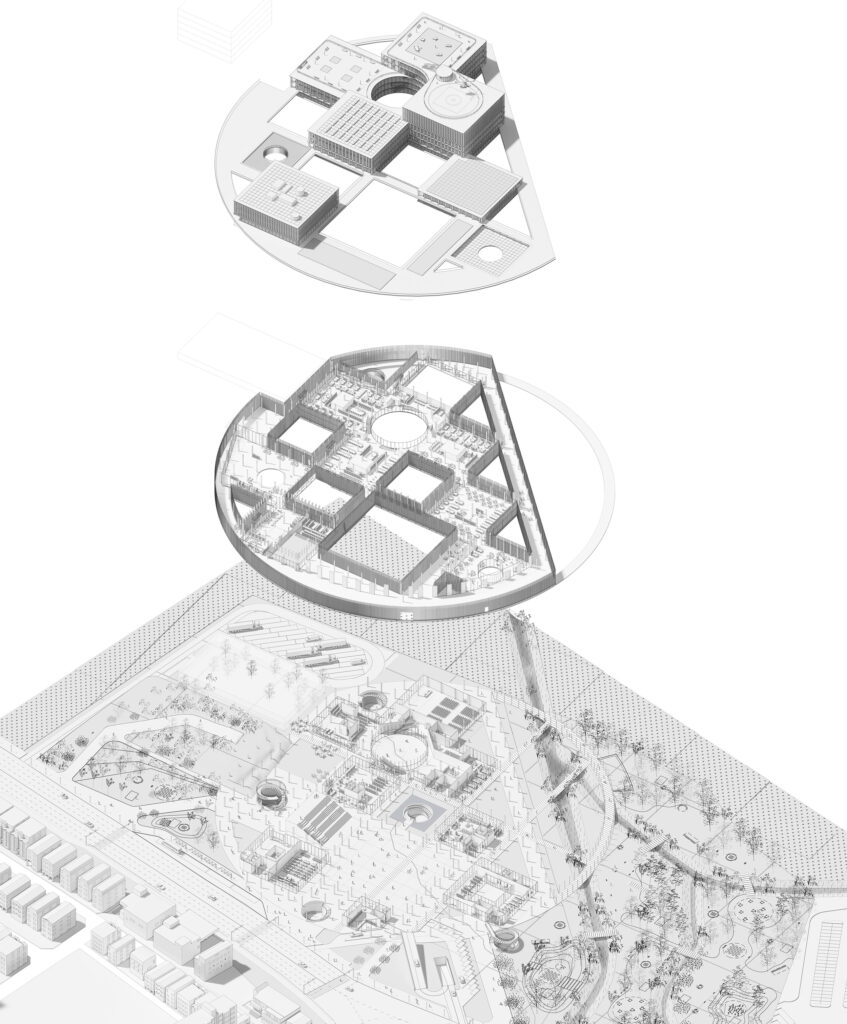
The volumetric composition of the building has a dynamic elevation with volumes of different heights and façade modulations, giving
a vibrancy of elements to the appearance. The structure is composed of basic geometric intersected in a well-organized building.
The façade system is made up of a modulation that maintains the dimensions of the entire project but receives a different treatment
depending on its orientation—generating a formal dynamism with a few compositional laws that respond to the treatment of
sunlight in winter and summer.

Modular system: Chessboard
Program clusters are arranged in groups of 32x32m. Every program cluster is located next to a patio, allowing natural lighting and ventilation.
Access optimization
Access points are optimized, establishing a hierarchy within outdoor spaces. This system is established with the introduction of a module. The system allows the generation of meeting and distribution spaces that easily organize the building in the face of many different circulations.
Outdoor hierarchy
Outdoor spaces are integrated as structural elements within the building. A hierarchy is established: the plaza (A), the outdoor lobbies (B), and the patios (C).
Future expansion
This organization highlights the phases of the project. The building adapts the plot space to be able to contemplate the expansion of the 10,000m2 required. The building seeks to assume this expansion without stopping its activity. Thus, the growth would adapt to the 32x32m grid system and occupy a strategic position in the complex.
Public activation
The City Council, where the representative government is represented, is located close to the road and, therefore, the people. The City Hall is located in the inner part of the plot, absorbing the circulation and dynamizing the whole building, creating a public space across the entire complex.
Open Plan – Compact Volume
Despite the “non-hierarchical” approach, the number of accesses is optimized. All the services that can be provided to citizens are located on the ground floor: bank, community center, nursery, cafeteria, and two libraries. Generally, these types of programs have their own controlled access so they could be located independently without duplicating control points. The rest of the program is in the same building and separates the public and private entrances. They all have direct access to the underground parking.
An infrastructure for the future
The project integrates concepts and visions about the future of the workplace. The future Goyang City Hall is a post-Covid and “future proof” building, able to adapt to new forms of work organization, in which physical and virtual presence and interaction are seamlessly combined and interchangeable.
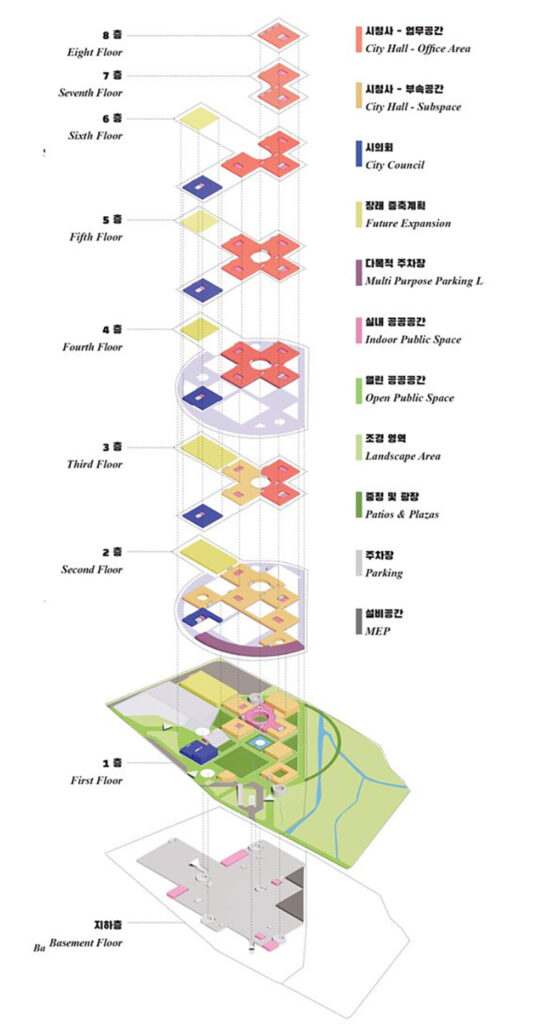

The project has been carefully studied to combine civic life events within the institutional complex. One of the most representative spaces is the Great Plaza, where it can host all kinds of events to integrate the political life and social life of the inhabitants of Goyang. The building is organized around spaces with natural lighting and encounters with nature. They allow workers to feel connected to the environment surrounding them and provide them with passive comfort resources.

The interiors of the offices are treated with special care to use prefabricated elements and eco-friendly finishes that create a space of well-being and connection with the adjacent nature. The goal is to provide workers with an area with a welcoming atmosphere.

Project Team
- Toni Cañellas
- Luis Collado
- Jose Luis de la Fuente
- Javier Martinez
- Silvia Muñoz


